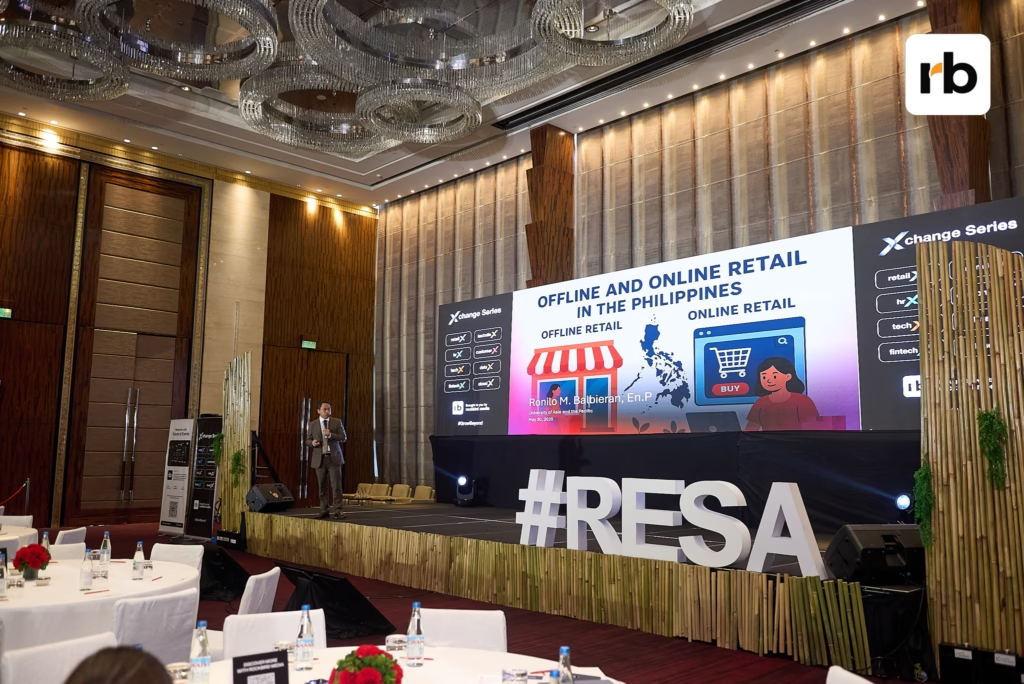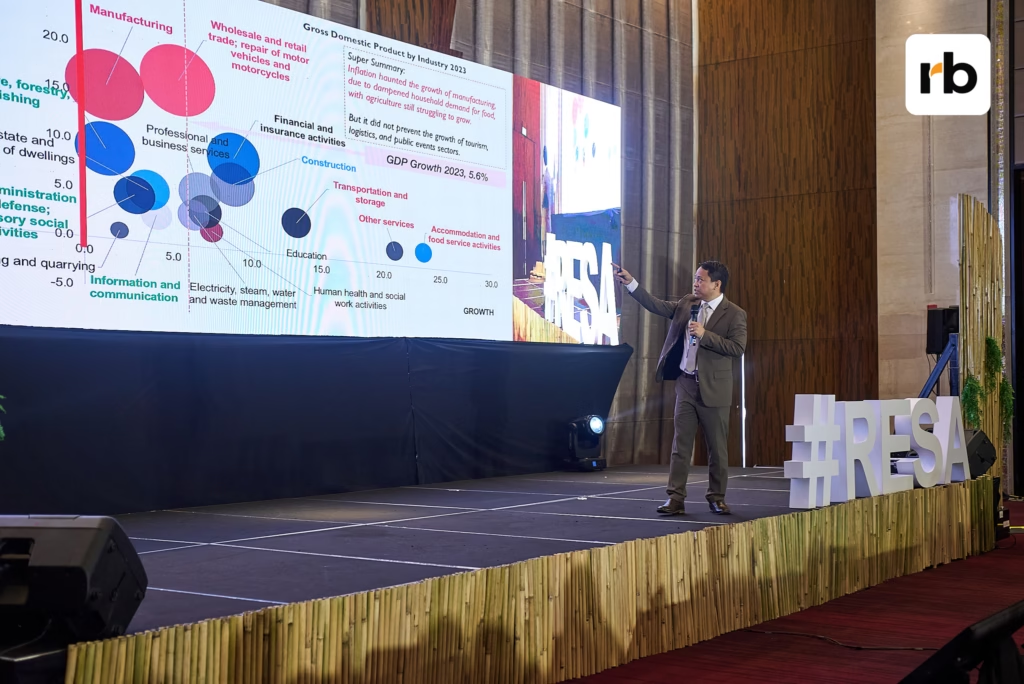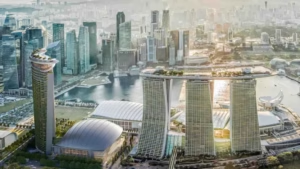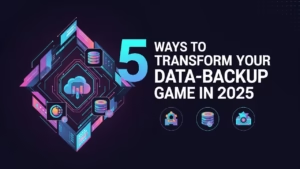By: Zenia Pearl V. Nicolas
In a captivating keynote session at rockbird media’s flagship economic summit, the spotlight turned to the Philippines’ evolving economic landscape — revealing a nation full of contradictions, potential, and momentum.
Day 2 of the Retail & E-Commerce Summit Asia 2025 at Grand Hyatt BGC opened with a stirring keynote from economist Ronilo Balbieran, who reframed our understanding of retail economics into four essential words:
Spending. Production. Employment. Income.
These aren’t just economic terms—they’re the very sequence that powers the country’s growth story.
Spending Fuels Growth — But It Starts With Production
Spending (money) is a sign of confidence. According to the Philippine Statistics Authority, consumer spending accounts for nearly 72% of the country’s GDP. That’s not just a number—it’s a reflection of the population that’s not just consuming, but aspiring. But spending isn’t magic. It begins with production and this is where global events come in.
“Spending cannot happen without production,” Balbieran emphasized.
“Production slows down, employment contracts. Without employment, there’s no income. Without income, no spending. It’s a loop.”
Balbieran explained how Trump-era tariffs and ongoing US-China trade wars slow down global production, making goods more expensive. When global GDP contracts, even resilient countries like the Philippines feel the ripple.
The World Bank warned that the 2018-2019 trade war shaved off nearly 0.6% from global GDP and sent shockwaves through emerging markets.
The Philippines: A Retail Powerhouse in Asia
The Philippines remains an outlier and yet the Philippines stands tall. Why? Because of something no other country has at this scale—its people abroad.
In 2022, OFWs sent home over $36.14 billion—making the Philippines one of the top 5 recipients of remittances globally, according to Bangko Sentral Pilipinas.
That’s where Balbieran’s comment hits:
“We have so much extra cash, even the banks don’t know what to do with it.”
He’s right. Banking liquidity in the Philippines is at an all-time high, and local banks continue to report excess reserves despite inflation. The economy also gets a massive boost from Net Primary Income (NPI) from Overseas Filipino Workers (OFW)—estimated at over ₱3.4 trillion, giving the country a unique edge: a steady influx of spending money.
Imports: A Blessing and a Warning
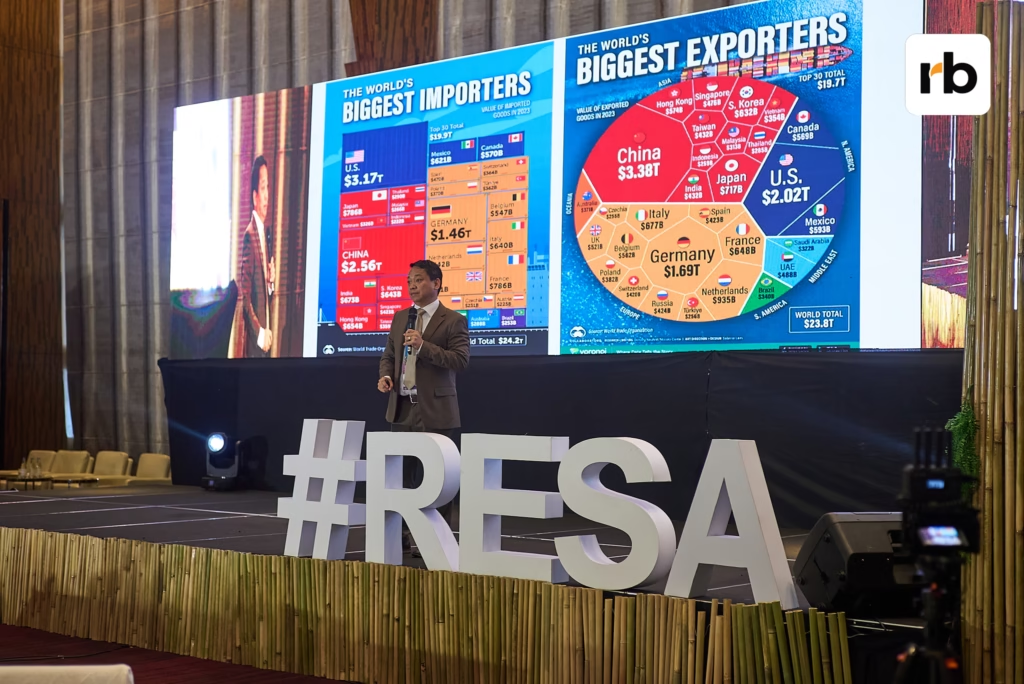
Balbieran also discussed how the country’s construction and tourism efforts–like building with imported steel and cement or feeding with imported food–highlight a dangerous over-reliance on external supply chains. While Balbieran clarified that importing isn’t inherently bad, he warned that dependency weakens local production and worsens trade deficits.
In 2023, the Philippines imported $145.6 billion worth of goods, according to Trading Economics, a significant portion of which was construction materials and food. In addition, in 2024 alone, the Philippines imported over $130 billion in goods. However, the country is not trade-dependent like Singapore, which has a 320% trade-to-GDP ratio.
Retail & E-commerce: The Brightest Beacons
Retail and wholesale now comprise 18.4% of GDP —- the largest share among all sectors —- while Philippine e-commerce recorded a 24.1% growth in 2023, topping the global charts. This reinforces the country’s official reclaiming of the fastest-growing internet economy in Southeast Asia, as cited by the October 2024 e-Conomy SEA report by Google, Temasek, Bain & Company.
“The Lord listened,” Balbieran joked, “and coffee sales skyrocketed to 93% adoption!”
E-commerce may have lagged policy attention, but Filipinos led in usage. “We have 6-year-olds using Gemini AI to do homework,” he laughingly shared, “and platforms are now part of our culture.”
Sector That Survived — and Redefined Growth
When the economy slowed during the pandemic, three sectors kept us going:
- Accommodation and food services
- Transportation and logistics
- Other services (weddings, events gatherings)
Now in 2025 — an election year — spending and production are accelerating. The economy has not just recovered; it has restructured.
Young Labor Force, Global Demand
We boast one of the youngest populations in Asia, with a labor force of 52 million, and a 96.9% employment rate.
“Other countries are pirating our skilled workers,” Balbieran noted — because we’re not only hardworking, we’re digitally native, and culturally agile.
While Japan struggles with labor gaps and vacant homes, the Philippines has become the human capital darling of Asia.
Labor Market Outlook: High Participation, Room for Upskilling
With a labor participation rate of 66.9% and unemployment down to 3.1% the workforce is showing resilience. However, productivity remains uneven — with agriculture and accommodation sectors falling far below national productivity averages. There’s a significant need for digital upskilling and retooling, especially as e-commerce continues to absorb much of the new labor demand.
Logistics, Mobility, and Tourism Rebound
Community mobility has surged beyond pre-pandemic levels in parks, malls, and groceries —- signaling renewed consumer energy. Tourism, aided by digital platforms, is also back on track, recovering from a -71.8% dip in 2020 to ₱59.9B in value added by 2023.
Policy Power: What’s Driving the 6–7% Growth Targets
Key government acts such as the Internet Transactions Act, CREATE MORE Act, and Tatak Pinoy Act, along with investments in EVs, public-private partnerships, and the “One Town, One Product” initiative, are providing the legislative backbone to support a digital-first, inclusive economy.
Why the World is Watching the Philippines
Balbieran’s last words were for entrepreneurs and innovators:
“The government doesn’t grow your business—you do. The role of the state is to facilitate. But expansion is your mission.”
In a time when global economies are slowing, the Philippines is accelerating.
Our workforce is young and globally in demand.
But beyond the data is the heart of the Filipino: resilient, optimistic, and always moving forward. Balbieran left us with a reminder — that our greatest assets aren’t just remittances or GDP numbers.
Our greatest asset is our people — families that spend, youth that innovate, women that persist, and a nation that adapts faster than any algorithm.
This isn’t just economic momentum.
This is a revolution — powered by connection, culture, and courage.
So if the world is looking for the next global growth story, they don’t need to look far.
It’s already happening — right here in the Philippines.
#rockbirdmedia #GrowBeyond

